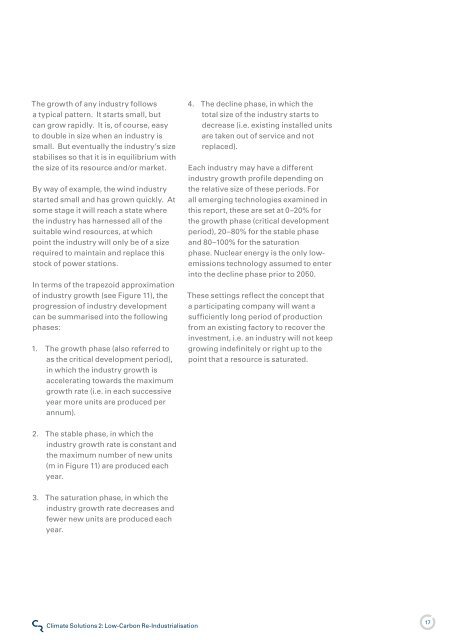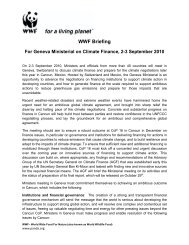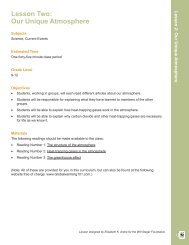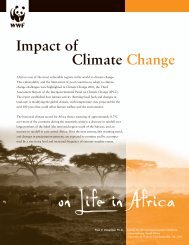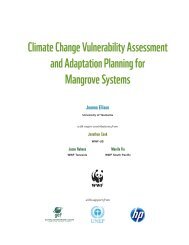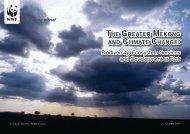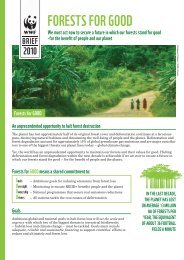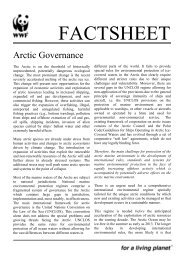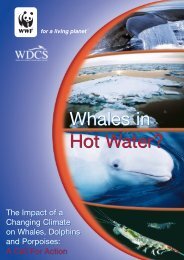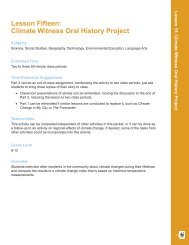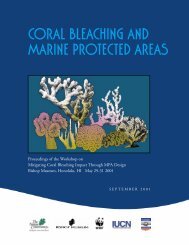Climate Solutions 2: Low-Carbon Re-Industrialisation - WWF Blogs
Climate Solutions 2: Low-Carbon Re-Industrialisation - WWF Blogs
Climate Solutions 2: Low-Carbon Re-Industrialisation - WWF Blogs
Create successful ePaper yourself
Turn your PDF publications into a flip-book with our unique Google optimized e-Paper software.
The growth of any industry follows<br />
a typical pattern. It starts small, but<br />
can grow rapidly. It is, of course, easy<br />
to double in size when an industry is<br />
small. But eventually the industry’s size<br />
stabilises so that it is in equilibrium with<br />
the size of its resource and/or market.<br />
By way of example, the wind industry<br />
started small and has grown quickly. At<br />
some stage it will reach a state where<br />
the industry has harnessed all of the<br />
suitable wind resources, at which<br />
point the industry will only be of a size<br />
required to maintain and replace this<br />
stock of power stations.<br />
In terms of the trapezoid approximation<br />
of industry growth (see Figure 11), the<br />
progression of industry development<br />
can be summarised into the following<br />
phases:<br />
1. The growth phase (also referred to<br />
as the critical development period),<br />
in which the industry growth is<br />
accelerating towards the maximum<br />
growth rate (i.e. in each successive<br />
year more units are produced per<br />
annum).<br />
4. The decline phase, in which the<br />
total size of the industry starts to<br />
decrease (i.e. existing installed units<br />
are taken out of service and not<br />
replaced).<br />
Each industry may have a different<br />
industry growth profile depending on<br />
the relative size of these periods. For<br />
all emerging technologies examined in<br />
this report, these are set at 0–20% for<br />
the growth phase (critical development<br />
period), 20–80% for the stable phase<br />
and 80–100% for the saturation<br />
phase. Nuclear energy is the only lowemissions<br />
technology assumed to enter<br />
into the decline phase prior to 2050.<br />
These settings reflect the concept that<br />
a participating company will want a<br />
sufficiently long period of production<br />
from an existing factory to recover the<br />
investment, i.e. an industry will not keep<br />
growing indefinitely or right up to the<br />
point that a resource is saturated.<br />
2. The stable phase, in which the<br />
industry growth rate is constant and<br />
the maximum number of new units<br />
(m in Figure 11) are produced each<br />
year.<br />
3. The saturation phase, in which the<br />
industry growth rate decreases and<br />
fewer new units are produced each<br />
year.<br />
<strong>Climate</strong> <strong>Solutions</strong> 2: <strong>Low</strong>-<strong>Carbon</strong> <strong>Re</strong>-<strong>Industrialisation</strong><br />
17<br />
<strong>Climate</strong> Risk


